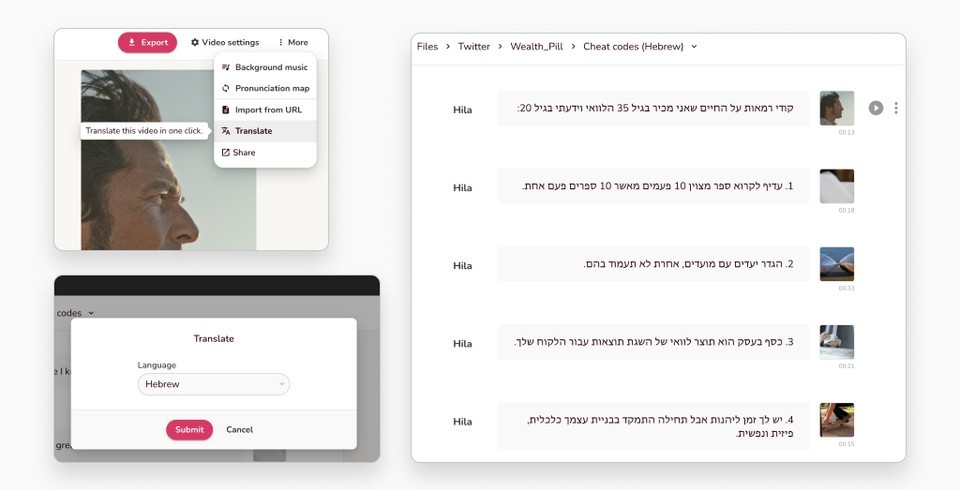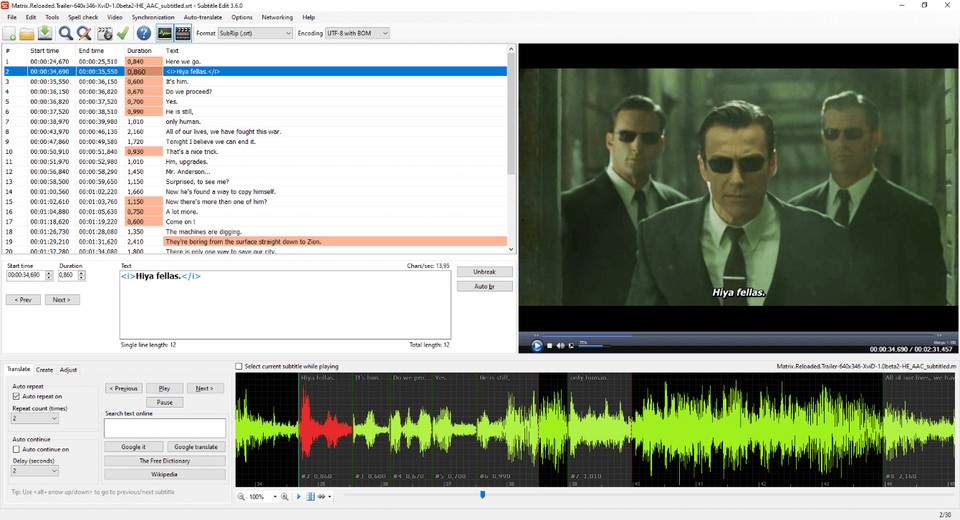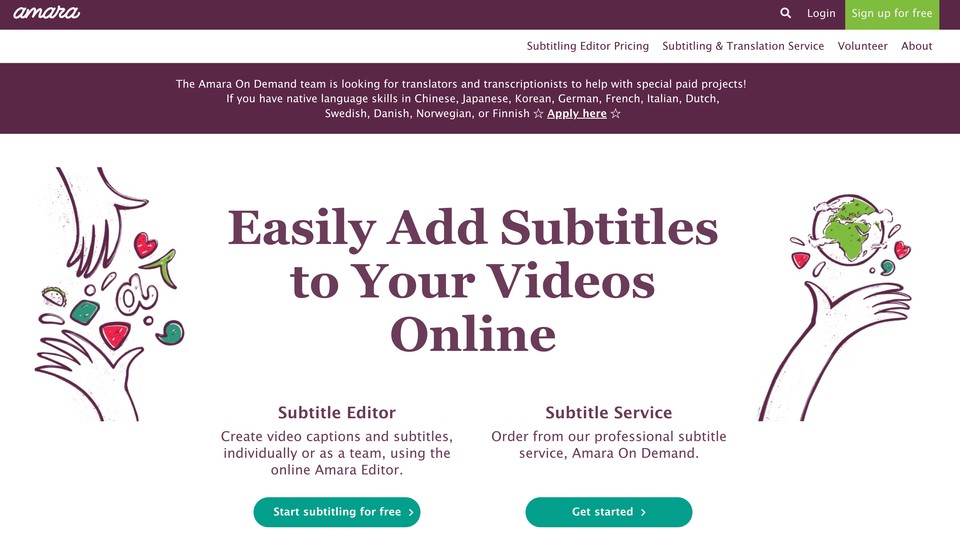Introduction
Statistics indicate that only a small fraction, approximately 20%, of the global population is proficient in English. This poses a significant challenge as it means that a considerable portion of the markets that your business targets may have trouble understanding your content. Thus, if your business intends to expand its horizons and target different markets across the globe, the key to success lies in effective communication.
However, with regard to international audiences, language, and cultural differences can sometimes act as stumbling blocks. This is where video localization swoops in to save the day. By transforming videos into universal messengers that transcend linguistic and cultural barriers, video localization may be just the thing you’re looking for to take your business to the next level.
In this article, we will delve into the world of video localization, exploring how it empowers businesses to overcome language barriers and communicate effortlessly on a global scale. Let’s understand the concept of video localization and its significance in today’s business landscape.

Decoding Video Localization
Video localization refers to the process of adapting video content to meet the cultural, linguistic, and regional preferences of the target audiences. It is more than just translation as it involves elements like visuals, audio, captions, and subtitles. While translation involves converting text from one language to another, video localization takes a holistic approach by considering the cultural nuances and adapting the entire video content.
It not only adapts visuals but also modifies audio, adjusts colors, fonts, and symbols, and even rewrites scripts to ensure a seamless and culturally relevant viewing experience.
Benefits of Video Localization
As a powerful tool in fostering effective global communications, video localization ensures that the content resonates with the international audience, encourages engagement, and understanding.
There are several compelling reasons why your business should adopt video localization. Let’s discuss a few reasons why you should consider incorporating a video localization strategy into your future plans:
Bridging Linguistic Divides:
Video localization seamlessly bridges linguistic divides, enabling individuals and businesses to convey their messages in multiple languages. By providing synchronized language adaptation, it allows viewers to understand the spoken content in their native language. With culturally apt subtitles and dubbing, it opens up a world of possibilities for global business communication and engagement.
Enhanced Accessibility:
One of the significant advantages of video localization is improved accessibility. By adapting visual content into various languages and offering subtitles in different languages, it not only caters to individuals with diverse linguistic backgrounds but also makes content accessible to people who are deaf and hard of hearing, thereby making videos more inclusive and accessible. Ultimately, by prioritizing accessibility through video localization, businesses demonstrate their commitment to inclusivity and ensure that their messages reach and resonate with a wide range of viewers.
Global Reach and Impact:
With video localization, businesses can expand their global reach and make a lasting impact on an international audience. Companies can tap into new markets by leveraging the power of video localization. By breaking language barriers with a suitable ideo localization strategy businesses can uncover immense growth and revenue opportunities.
Improved Brand Perception
Video localization has a significant impact on brand perception as businesses can show their commitment to understanding and respecting local cultures with localized video communications. the availability of rand message, product information, or marketing campaigns in multiple languages can boost the image of businesses. Video localization further enhances customer engagement, builds trust, and establishes a global presence for businesses seeking to thrive in diverse markets.
Businesses With Successful Video Localization Strategies
Tasty
Tasty, a food media brand, caters to a global audience with a successful video localization strategy. They adapt their recipe videos by adding subtitles or dubbing in different languages, allowing viewers from different regions to follow and recreate the dishes. This localization effort has contributed to Tasty’s worldwide popularity.
Google has leveraged video localization to promote its product and services across the globe. With the help of localized videos that highlight regional features, language adaptations, and user experiences, Google effectively communicates its value proposition to diverse audiences, and ultimately, strengthens its market value.
Blendtec
Blendtec, an appliance manufacturer, gained substantial attention and global reach through its video localization strategies. Their “Will it Blend?” series where they blend unconventional items like golf balls and iPhones went viral in multiple countries. By localizing the videos with language adaptations and culturally relevant content, Blendtec successfully engaged with international audiences and increased its brand awareness.
Apple
Apple has successfully implemented video localization by adapting its commercials to suit different markets, incorporating local languages, cultural references, and aesthetics, thereby communicating with consumers on a global scale.
Netflix
As a global streaming giant, Netflix has successfully implemented video localization strategies by offering subtitles, dubbing, and alternate audio options for its extensive library of content.
Check out this how-to video to customize subtitles and audio on Netflix:
Top 4 Video Localization Tools
Fliki
Fliki is an AI-powered software that allows you to create videos from scripts in different languages.
Pros of Fliki
Allows you to repurpose your written content
Offers audio, subtitles, and captions in 75 different languages with 1000 voiceovers
Cons of Fliki
Cannot translate existing videos (Feature coming soon).

Subtitle Edit
Subtitle Edit is a free editor for video subtitles. It allows you to edit and create subtitles.
Pros of Subtitle Edit
User-friendly interface for editing and creating subtitles
Supports various subtitle formats
Offers advanced features like spell-checking and waveform visualization
Cons of Subtitle Edit
Limited support for audio and video editing
Lack of collaborative features for team-based localization projects

Amara
Amara is a cloud-based subtitle editor and offers subtitling features like audio waveforms, adjustable playback speed, and notes for easy communication
Pros of Amara
Allows multiple users to work on a project simultaneously
Offers integration with popular video hosting platforms
Cons of Amara
Limited video editing capabilities
The free version limits the number of team members and projects.

Adobe Premiere Pro
Adobe Premiere Pro is a professional video editing software with powerful localization capabilities
Pros of Adobe Premiere Pro
Supports various subtitle formats
Offers extensive customization options
Provides advanced features for audio and video editing
Cons of Adobe Premiere Pro
Steeper learning curve compared to others
Requires a subscription or a one-time purchase

Conclusion
Video localization is a powerful tool for businesses aiming to overcome language barriers and connect with a global audience. It has become an indispensable component of successful cross-cultural communication. Embracing video localization empowers businesses to expand their global reach, strengthen brand presence, and unlock new opportunities for growth in today’s interconnected world.



